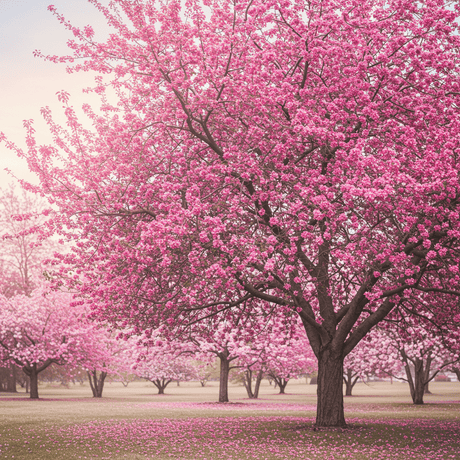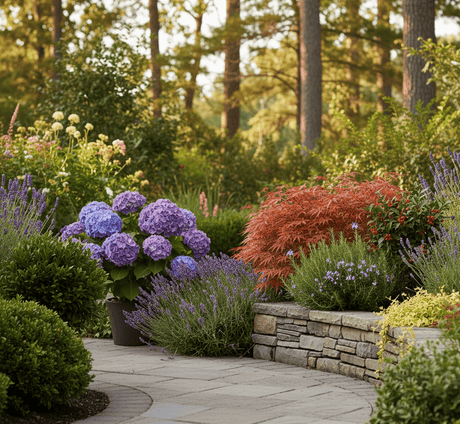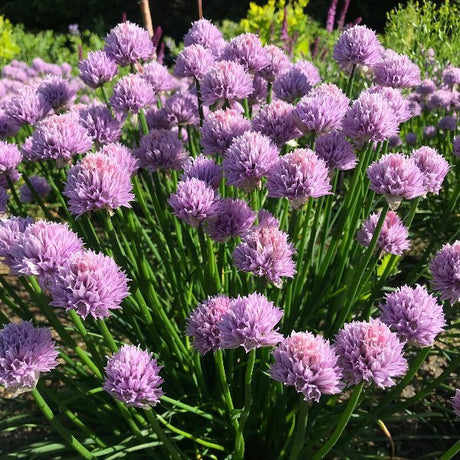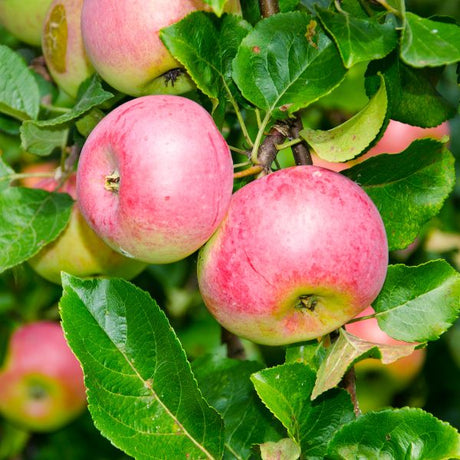American Beech Tree
Fagus grandifolia
- Stay Protected with Plant Sentry ™
American Beech Tree - #3 Container is backordered and will ship as soon as it is back in stock.
Plant Sentry™
Plant Sentry™

Plant Sentry™ Protected
Your order is protected by our compliance system that:
- Prevents restricted plants from shipping to your state
- Ensures plants meet your state's agricultural requirements
- Protects gardens from invasive pests and diseases
Delivery and Shipping
Delivery and Shipping
Delivery and Shipping
Fast, Safe Plant Delivery
Ships in 3-4 business days • Tracking provided • Weather protected
| Under $50 | $9.99 |
| $50 - $99.99 | $14.99 |
| $100 - $149.99 | $16.99 |
| $150 - $198.99 | $24.99 |
| $199+ | FREE |
✓ Zone-specific timing • ✓ Professional packaging • ✓ Health guarantee
Understanding Plant Options
Nature Hills offers plants in two main formats:
- Container Plants: Grown in pots with soil, sized by container volume and plant age
- Bare Root Plants: Dormant plants without soil, sized by height measurements
Container Plant Sizes
Container sizes indicate plant age and growing capacity rather than liquid volume equivalents. Our containers follow industry-standard nursery "trade gallon" specifications, which differ from standard liquid gallon measurements.
Young Plants (6 months to 18 months old)
| Container Size | Actual Volume | Metric Equivalent |
|---|---|---|
| 2" x 2" x 3" | 0.18 - 0.21 dry quarts | 0.20 - 0.23 dry liters |
| 4" Container | 0.31 - 0.87 dry quarts | 0.35 - 0.96 dry liters |
| 4.5" Container | 0.65 dry quarts | 0.72 dry liters |
| 6" Container | 1.4 dry quarts | 1.59 dry liters |
| 1 Quart | 1 dry quart | 1.1 dry liters |
| 5.5" Container | 1.89 dry quarts | 2.08 dry liters |
Established Plants (18 months to 2.5 years old)
| Container Size | Actual Volume | Metric Equivalent |
|---|---|---|
| 2 Quart | 2 dry quarts | 2.2 dry liters |
| #1 Container | 2.26 - 3.73 dry quarts | 2.49 - 4.11 dry liters |
| 5" x 5" x 12" | 3.5 - 4.3 dry quarts | 3.85 - 4.74 dry liters |
Mature Plants (2-4 years old)
| Container Size | Actual Volume | Metric Equivalent |
|---|---|---|
| #2 Container | 1.19 - 1.76 dry gallons | 5.24 - 7.75 dry liters |
| #3 Container | 2.15 - 2.76 dry gallons | 8.14 - 12.16 dry liters |
Large Plants (3-5 years old)
| Container Size | Actual Volume | Metric Equivalent |
|---|---|---|
| #5 Container | 2.92 - 4.62 dry gallons | 12.86 - 20.35 dry liters |
| #6 Container | 5.25 - 6.01 dry gallons | 23.12 - 26.42 dry liters |
| #7 Container | 5.98 - 6.53 dry gallons | 26.34 - 28.76 dry liters |
Bare Root Plants
Bare root plants are sold by height from the root system to the top of the plant. Plants may exceed minimum height requirements.
Common Sizes:
- Trees: 1 foot, 2 feet, 3 feet, 4 feet, 5 feet, 6 feet
- Shrubs & Perennials: 1 foot, 18 inches, 2 feet
Important Notes
Container Volume Specifications
- Trade Gallon Standard: Our containers follow industry-standard "trade gallon" specifications established by the American National Standards Institute (ANSI Z60.1) for nursery stock
- Volume Variations: Actual soil volume may vary due to plant root systems and growing medium settlement
- Age Indicators: Container size primarily indicates plant age and maturity rather than liquid volume equivalents
Growing Conditions
- Plant size can vary based on variety and growing conditions
- Container size helps indicate plant maturity and establishment level
- Larger containers generally mean more established root systems and faster landscape establishment
Seasonal Availability
- Bare root plants are available seasonally when dormant
- Container plants are available throughout the growing season
- Specific varieties may have limited availability in certain sizes
Questions?
For questions about specific plant sizes or availability, please contact our plant experts who can help you choose the right size for your landscape needs.
Plant Highlights
American Beech Tree highlights at a glance!
-
Botanical Name
-
Brand
-
Growing Zones3, 4, 5, 6, 7, 8, 9
-
Growth RateModerate
-
Mature Height
-
Mature Width
-
Leaf Color
-
Flower Color
-
Fall Color
-
NativeYes
-
Pollinator FriendlyYes
-
Bloom PeriodEarly Spring, Late Spring
Characteristics
Where To Plant
When To Prune
- Late Winter
Water & Moisture Needs
- Moderate
Sunlight Needs
Soil Needs
- Well Drained
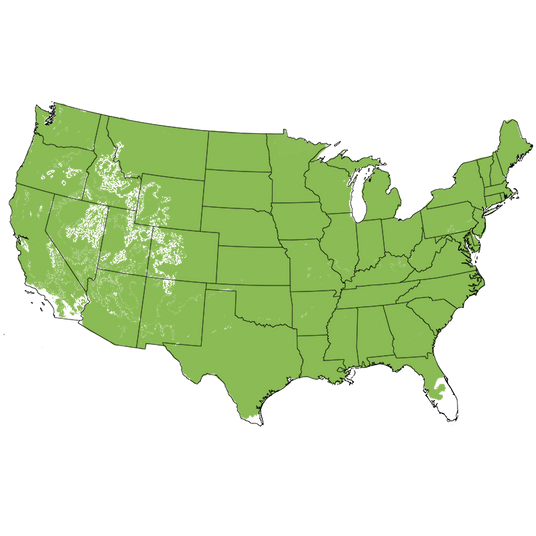
Growing Zones
A Stately Legacy American Beech Tree
- Outstanding Native Proudly Offered by Nature Hills
- Long-Lived Tree
- Dark Green, Highly Textured Leaves are Instantly Recognizable
- Coppery Golden-Bronze Autumn Color
- Distinctive, Smooth, Gray Bark
- Beautiful, Wide-Spreading Branches
- Generations Have Carved Their Initials on Beech
- Naturalize on Larger Properties
- Large-Scale Specimen
- Valuable Wood
- Excellent Wildlife Tree
- Edible Beech Nuts
Thoughtful property owners are seeking native trees to increase property value and provide a beneficial environmental impact. The majestic American Beech Tree (Fagus grandifolia) offers shade, wildlife shelter, and a fantastic silhouette.
Enjoy the familiar stout trunk and spreading crown. You'll instantly recognize the large, glossy leaves with their prominent parallel veins and fine-textured saw-tooth margins.
The dark green, leathery leaves have a coarse, irregular margin and striking texture. You'll love their dense shade all summer.
In fall, American Beech delivers an impressive display of coppery-gold autumn foliage. Wintertime brings another contrast, with sweetly marcescent faded leaves that cling to the muscular, bare branches all season.
Generations of Americans have carved their initials into the smooth gray bark (although we advise against this quant practice). Settlers knew that there was rich farmland wherever they saw these noble trees.
Long-lived American Beech grows in a variety of conditions, including partial shade. It prefers rich, moist, alluvial soils that drain quickly but receive plenty of moisture.
Beech trees appear powerful with their wide-spreading canopies. They boast a sense of gravitas wherever they are placed. Use them in the proper setting to let their unique dignity shine.
Valuable Beech hardwood is known for its durability. It's one of the best-burning firewood to be found anywhere.
The triangular Beech nut has great appeal to both wildlife and people as a sweet, nutritious snack when ripe. Trees produce the nuts in a periodic cycle only after they reach maturity.
In a roomy setting, the American Beech is one of our outstanding native trees! People cherish these glorious plants for good reason.
Whether grown for beauty or wildlife, Beech is an easy-care, brawny tree with adequate water. We're proud to grow and sell these exceptional natives.
Order from the experts at Nature Hills today!
How to Use American Beech in the Landscape
Plan for the mature height and width of this tree. Their shallow root systems require well-drained soil that receives enough water to keep a film of moisture, without becoming saturated.
Use one as a specimen in a vista planting in a low-lying pasture. Enjoy the wonderful view from your deck.
Underplant with native shrubs and perennials to bring squirrels, turkeys, and deer to your property. Mix with Oak for a diverse mast resource.
Young Beech trees are quite shade tolerant and can become a dominant species in mixed plantings. Manage your timber stand to suit your overall goals for your property.
Use several in a glorious informal grouping and manage them as you wish, whether allowed to naturalize or kept manicured.
Place them along your property line, or in a low-lying "holler" to create a special getaway on your property. Add a picnic area, fire pit or campground placed to the north and east of their shade.
Picnic and camp at least 30 feet away from the canopy of the tree.
American Beech can provide you and your family with an unforgettable experience enjoying cozy evenings. You'll all love studying their robe of fall-bright, colorful leaves at a distance.
These are a marvelous choice as a memorial tree to plant in memory of a loved one.
#ProPlantTips for Care
Plant in full or partial shade. It will require at least four hours of direct sunlight a day.
You might consider planting them in the shade of a tree that will be removed within a decade or so. Young Beech trees are understory trees that adapt to shade but will outgrow a small space.
As mentioned, proper soil and water will be an important consideration over the life of the tree. The roots need rich soil that is porous enough to shed water quickly but remain moist with a slick of hydration.
Apply a three-inch layer of mulch over the roots and spread it to three feet outside the canopy. Add supplemental water as needed in the absence of rainfall.
Prune American Beech in late winter to correct form. Mow or cut around the base as desired to maintain it as a specimen.
One of our national treasures, the American Beech can live hundreds of years. Order yours today at NatureHills.com!





